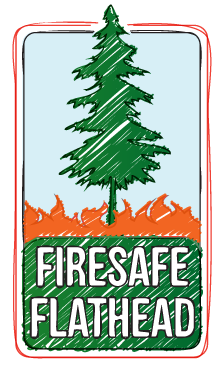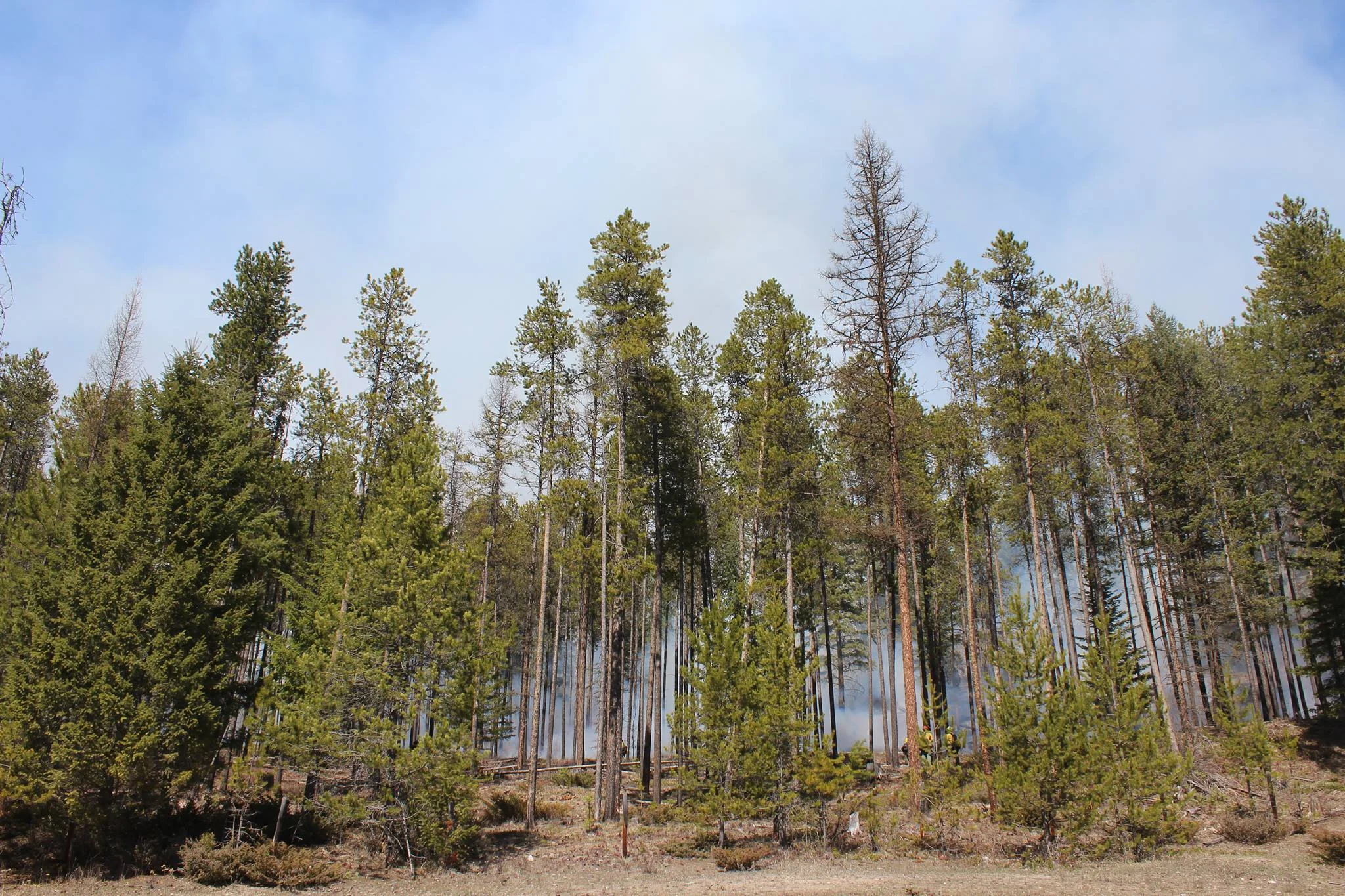BURN ONLY NATURAL VEGETATION AND WOODY MATERIALS.
DO NOT BURN when dry, windy weather is forecast and surrounding vegetation is likely to ignite. Strong gusty winds and downdrafts often accompany passing weather systems and thunderstorms . Light your burn only when favorable weather is forecast and safe burning conditions are present. Check your local weather at noaa.gov and the ventilation forecast at Flathead City-County Health Department HERE or call 751-8144.
Build piles of manageable size and in openings clear of surrounding or overhanging vegetation, structures, and utility lines. Burn piles should not be closer than 50 feet to any structure or 10 feet from any property line. When possible, continue to re-pile debris as material is consumed. This will allow the fire to stay small, yet hot, and burn out as quickly as possible.
Have enough long-handled tools (rakes, shovels, fire tools), water (charged hose, bucket, pond), equipment, and people on hand to extinguish your fire if unexpected changes in fire behavior occur. Be prepared to put your fire out if it becomes difficult to manage.
Build piles constructed of dry materials that are free of dirt, so they burn clean and fast. Do not burn wet grass, needles, leaves, or material that will smolder and produce excess smoke. Piles may be covered with plastic or waterproof paper to keep them dry until surrounding fuels are too wet/green to burn and control is no longer a concern; remember to remove plastic before igniting the piles.
Fires must be completely extinguished if any emission from the fire is detrimental to the health, safety, or welfare of any person; if it causes damage to property or business; or if it causes a nuisance to others.
Fires are not out until cold to the touch with no flame or smoke.
Call 911 immediately if your fire does burn out of control.
Landing piles must be broken apart and completely extinguished before the end of the permit period.
Do not attempt to bury any burning material as fire can burn underground, sometimes for several months.
Burn barrels should NEVER be used to burn garbage. Burn barrels may be used to burn natural vegetation and woody materials.
Consider Alternatives to Burning:
Make a compost pile out of small organic materials
Till vegetative waste materials into the soil
Use thinning and logging debris for firewood
Haul debris to local landfill free of charge
Chip thinning and logging debris
Lop and scatter thinning and logging debris
Machine crush or trample thinning and logging debris
REMEMBER, you are responsible for any and all fire suppression costs if your fire escapes your control!
Montana State Statute 50-63-103. Liability for offender for damages and costs. Except as provided in 50-63-104, a person who sets or leaves a fire that spreads and damages or destroys property of any kind not belonging to the person is liable for all damages caused by the fire, and an owner of property damaged or destroyed by the fire may maintain a civil suit for the purpose of recovering damages. A person who sets or leaves a fire that threatens to spread and damage or destroy property is liable for all costs and expenses incurred, including but not limited to expenses incurred in investigation of the fire and administration of fire suppression, by the state of Montana, by any forestry association, or by any person extinguishing or preventing the spread of the fire.

